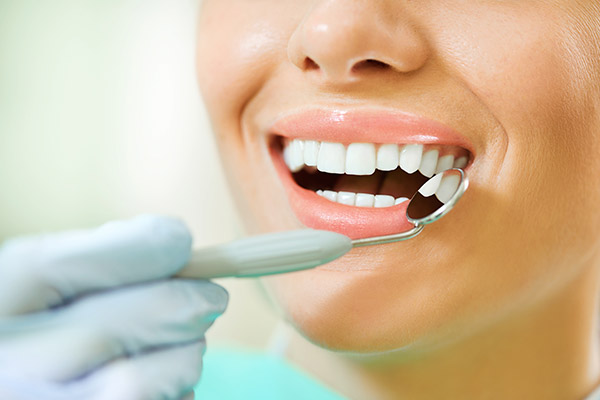
We're here for you
We offer a wide range of dental services for all our clients needs. Please see the full list of services and what they entail below. If you have any questions or need to schedule an appointment, please call our office at (614) 665-7500.
Gum Grafting
Recession is a very common finding around teeth and involves the loss or lack of supporting gum tissue around teeth. Often, as gum recedes or moves away from the teeth, it can become very thin and no longer insulate or protect the tooth.
Gum grafting is a technique to restore thin, receding gum around teeth and implants.
Multiple techniques and materials are available including your own gum or donor gum. Dr. Ross Gordon, Westerville periodontist, will review the best way to restore your gums to optimal health.
Sinus lifts
Sinus lifts, or sinus augmentation, is a procedure performed before dental implants are placed and is done alongside bone grafting. This is commonly needed in order to replace missing upper teeth in the back of your mouth. Your sinus, which is an air space above your upper teeth, is elevated either before or during implant placement to allow adequate room for the implant.
Biopsies
Biopsies are performed by removing a small amount of tissue from your mouth and then sending it to a oral pathologist for examination. Once the lab has completed its work, we will work with you to assess what the next steps are.
Oral biopsy results are typically available within 2 weeks once everything has been sent to the lab for processing. There are different ways to examine the samples which will be discussed thoroughly by Dr. Ross Gordon, Westerville periodontist.
Splinting
Splinting, or bonding adjacent teeth to each other, is a way to help support loose or wiggly teeth. Our office uses a reinforced fiber and tooth-colored composite to create a strong brace between the loose teeth and help prevent tooth loss.
Frenectomies
A frenectomy is a simple oral surgery that helps treat a lip-tie or tongue-tie, and gum recession caused by gum disease. There are two types of frenectomies, a lingual frenectomy and a labial frenectomy. During a lingual frenectomy, the dentist will remove or modify the band of tissue that connects the underside of your tongue to the floor of your mouth. During a labial frenectomy the dentist will remove the band of tissue that connects your upper (or lower) gums to your front teeth.
Extractions and Socket Grafting
Extractions are a common necessity for many dental patients. A tooth extraction is usually necessary when all other methods such as a root canal will not have a long-term benefit or the tooth cannot be saved. Often this procedure is referred to as “pulling a tooth.” The entire tooth and root will be removed and replaced with bone graft to preserve the bone. This is performed to help prepare the site for an implant. Usually a temporary tooth can be prepared by your general dentist to have while things heal before it’s ready for an implant.
Bone Grafting
A dental bone graft helps to add both volume and density to your jaw where there has been bone loss. Like tooth extractions, bone grafts are quite common.
There are a few reasons why one might need a bone graft:
- Rebuild foundation around a tooth with gum disease or bone loss
- Preserve bone after an extraction
- Preparing jaw bone before getting implants
Implant Procedures
Dental implants are advantageous solutions to missing teeth. Implants are small titanium posts that are surgically placed into the jaw. These are meant to substitute the root of the tooth. Once the jawbone bonds with the new “roots,” your new dental implants can be attached to the new foundation with the help of your general dentist.
Having dental implants can help prevent bone deterioration over time, which usually occurs when there are multiple teeth missing.
Implants require ideal bone foundation and may take a few to several months to heal before they are ready to be used to chew on. Sometimes this requires the need for adding bone before or after implant placement. Dr. Ross Gordon, Westerville periodontist, has placed hundreds of implants and is pleased to discuss the ability to restore your oral quality of health.
Osseous Surgery
Gum disease can cause damage to the bone below your gums which may require further treatment than just cleanings or deep cleanings. Osseous, or bone, surgery is a way to correct the damage by eliminating the problems with the foundation deep around your teeth. The goal is to allow these areas to no longer collect bacteria and tartar and prevent further damage, bone loss and eventual tooth loss.
Deep Cleaning
Deep cleanings are often necessary for those with gum disease. While gum disease cannot be fully reversed, a deep cleaning can help stop the progression of gingivitis as well as the more advanced periodontal disease.
What is the difference between a deep cleaning and a regular dental cleaning?
During routine hygiene visits your hygienist will thoroughly clean your teeth and gums with standard tools.
During a deep cleaning additional tools and care are provided in removing as much plaque and tartar buildup as possible. More time and local anesthesia (numbing) is usually necessary to perform this procedure. The goal is to allow the gums to heal themselves and better assess the foundation around the teeth. Dr. Ross Gordon, Westerville periodontist, has a hygiene team ready to help your gums bounce back to health!
